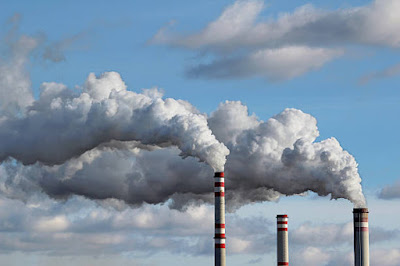 |
| istock |
Causes of Air Pollution in Indian Cities
Vehicular Emissions: One of the primary contributors to air pollution in Indian cities is vehicular emissions. The ever-expanding fleet of vehicles, predominantly fueled by gasoline and diesel, releases a cocktail of pollutants, including particulate matter (PM), nitrogen oxides (NOx), and volatile organic compounds (VOCs). The congested city streets bear witness to the detrimental impact of exhaust fumes on air quality.
Industrial Activities: The industrial landscape of India, while pivotal for economic growth, also plays a detrimental role in air quality. Unchecked industrial emissions release a cocktail of harmful substances, including sulphur dioxide (SO2) and nitrogen dioxide (NO2), which not only compromise the air we breathe but also contribute to the depletion of the ozone layer.
Construction and Urban Development: The rapid pace of construction and urban development generates dust and pollutants, affecting air quality. Construction activities contribute to particulate matter and can exacerbate respiratory issues among the urban population.
Biomass Burning: In both urban and rural settings, the practice of burning agricultural residues and biomass for cooking and heating purposes releases large amounts of pollutants. This practice not only impacts air quality but also poses a health risk for those exposed to the resulting smoke and fumes.
Waste Burning: Improper waste management practices, including the burning of plastic and electronic waste, add another layer to the air pollution crisis. The release of toxic chemicals during waste burning exacerbates the health risks for those residing in close proximity to such activities.
Consequences of Air Pollution
Health Impacts: The most immediate and alarming consequence of air pollution is its impact on public health. Respiratory diseases, cardiovascular problems, and increased susceptibility to infections are common among individuals exposed to polluted air. Children and the elderly are particularly vulnerable.
Environmental Degradation: Beyond its impact on human health, air pollution contributes to environmental degradation. Acid rain, soil pollution, and harm to plant and animal life are consequences that disrupt ecosystems and threaten biodiversity.
Economic Costs: The economic toll of air pollution is staggering. Increased healthcare expenditures, lost productivity due to illness, and damage to crops result in substantial economic losses. The burden of these costs falls not only on the individual but also on the nation's economic fabric.
Climate Change: Certain air pollutants, such as black carbon, contribute to climate change by accelerating the melting of glaciers and altering weather patterns. The interplay between air pollution and climate change poses a dual threat to the environment.
Solutions and Mitigation Strategies
Promoting Sustainable Transportation: Encouraging the use of public transport, promoting electric vehicles, and implementing stringent emission standards for vehicles can help reduce the impact of vehicular emissions on air quality.
Stringent Industrial Regulations: Implementing and enforcing strict regulations on industrial emissions is crucial. The adoption of cleaner production technologies and sustainable practices can mitigate the impact of industrial activities on air quality.
Green Urban Planning: Incorporating green spaces, pedestrian-friendly zones, and sustainable building practices in urban planning can mitigate the environmental impact of construction and urban development.
Alternative Energy Sources: Shifting towards alternative and renewable energy sources, such as solar and wind power, can reduce the dependency on fossil fuels and decrease air pollution associated with energy production.
Waste Management and Recycling: Implementing effective waste management practices, including recycling and waste-to-energy initiatives, can minimise the release of pollutants from open burning. Public awareness campaigns on responsible waste disposal are also crucial.
Awareness and Education: Raising public awareness about the consequences of air pollution and promoting environmentally conscious behaviours can contribute to a collective effort to improve air quality.
Conclusion
Air pollution in Indian cities is a pressing issue that demands immediate attention and concerted efforts from government bodies, industries, and the general public. Striking a balance between economic development and environmental conservation is imperative to ensure a sustainable and healthy future for the citizens.
Air pollution in Indian cities is a pressing issue that demands immediate attention and concerted efforts from government bodies, industries, and the general public. Striking a balance between economic development and environmental conservation is imperative to ensure a sustainable and healthy future for the citizens.
By adopting comprehensive measures and embracing cleaner technologies, India can navigate the growing concern of air pollution and work towards creating urban spaces that are not only vibrant but also safe for its inhabitants.
Written By - Rishabh Tripathi
Written By - Rishabh Tripathi










0 Comments